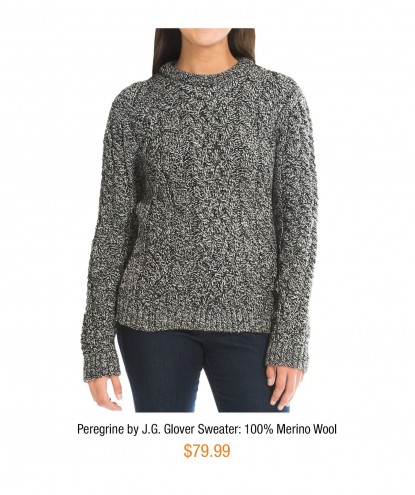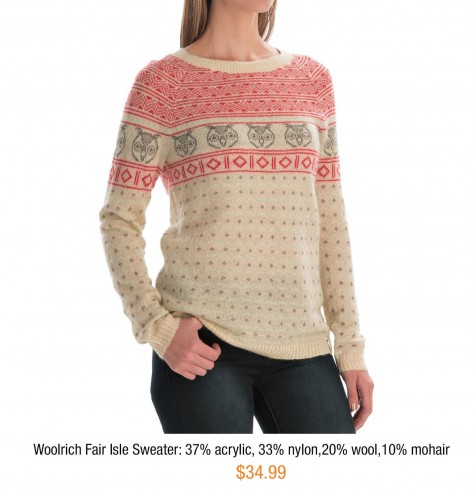What's the difference between natural and synthetic fabrics?
Natural fabrics, like merino wool, cotton, cashmere, and silk, are made of fibers that are produced by animals and plants. Synthetic fabrics, like polyester, nylon and acrylic, are "man-made" fibers that are created in laboratories.
Are natural fabrics warmer than synthetic fabrics?
Natural fabrics are only warmer than synthetic fabrics if the natural fabric is obtained from an animal. Wool is warmer than any synthetic fabric available. But, polyester (a synthetic fabric) can be warmer than cotton (a natural plant-based fabric).
Wool, a natural fabric often made from the soft hair of a camelid (e.g. sheep, goats and alpacas) is well known for its unsurpassed breathability, temperature regulation and moisture-wicking abilities. Wool sweaters tend to be warmer and more breathable than sweaters made with synthetic fabric.
If you're looking for the warmest sweater for the coldest days, you're better off investing in a 100% wool sweater, like the Peregrine by J.G. Glover sweater pictured below. However, if you're looking for versatility, durability and affordability, you'll probably find a sweater made of a wool-synthetic blend to be a great choice.

Why are wool sweaters warmer than cotton and synthetic sweaters?
Essentially, wool offers the same comfort to humans as they would their animal counterparts. Camelids survive in harsh climates with drastic weather changes that occur in a short amount of time. Their wool has to provide efficient protection in varying climates. In order to provide such dependable protection, the wool must be both extremely breathable and insulating.
Wool fibers have a natural loft that traps heat and retains warmth in cold temperatures. Cotton and many synthetic fabrics, on the other hand, let heat escape. Keep in mind that weight matters when it comes to the warmth of a sweater. An ultralight 100% wool sweater or base layer top will not provide as much warmth as a heavy or chunky-knit synthetic blend sweater.
Want a more in-depth look at how wool works to keep you comfortable in a variety of conditions? Read the Sierra Trading Post Explores post about Merino Wool.
Is an acrylic sweater warm?
Acrylic will keep you warm, but only if you are dry. Acrylic is a versatile synthetic fabric and can be made to mimic natural fibers, like wool. It's known to be lightweight, soft and warm, so that's why it's a popular sweater fabric. However, acrylic does not breathe as well as a natural fibers, like wool, do. So if you work up a sweat or get caught in the snow, you'll probably end up feeling the chill.
Why blend acrylic with wool?
If your warmest sweater isn't 100% wool, it's probably made of wool that's been blended with a synthetic fiber, like acrylic and/or nylon, like the Woolrich Fair Isle sweater pictured below.

Acrylic, nylon and polyester are often blended with wool because it helps make a stylish and warm sweater more affordable, durable and versatile. Wool is pretty durable, but adding acrylic or nylon to the blend makes the fabric much more so. And, as I'm sure you've noticed while shopping for sweaters, 100% wool or cashmere sweaters are much more expensive than wool-blend sweaters.
Whoa, there's a ton of information to cover when it comes to types of sweater fabrics. I only touched on a few aspects here. If you'd like even more information on wool, check out our wool buying guide.
That wraps up this installment of Sierra Trading Post Explores. I hope you learned a thing or two. Join me next month for another look into the lesser known aspects of your outdoor adventures and gear!



